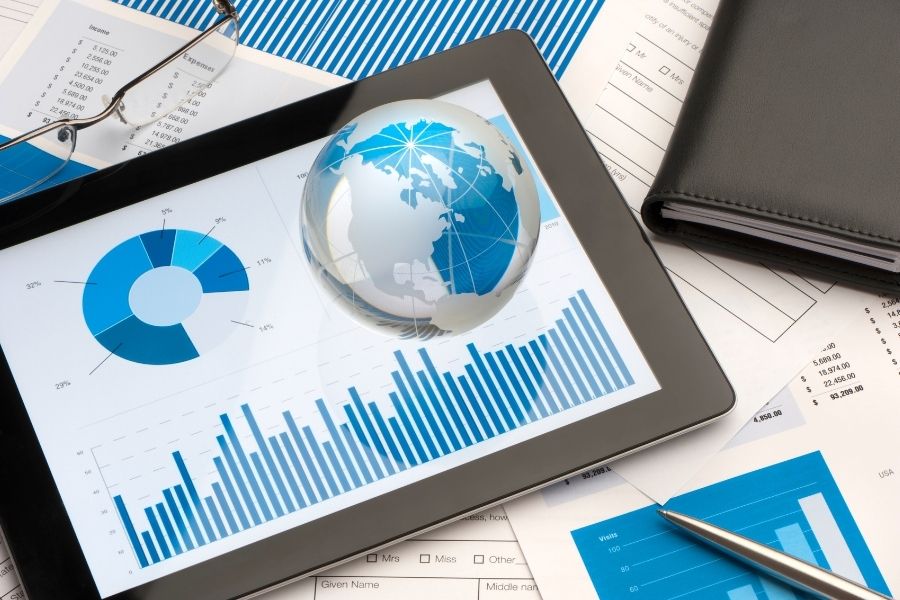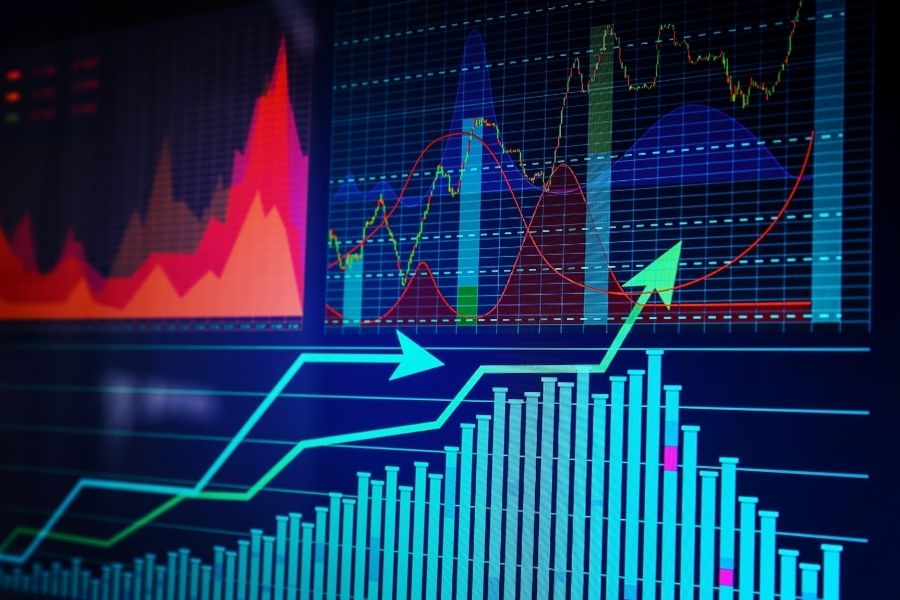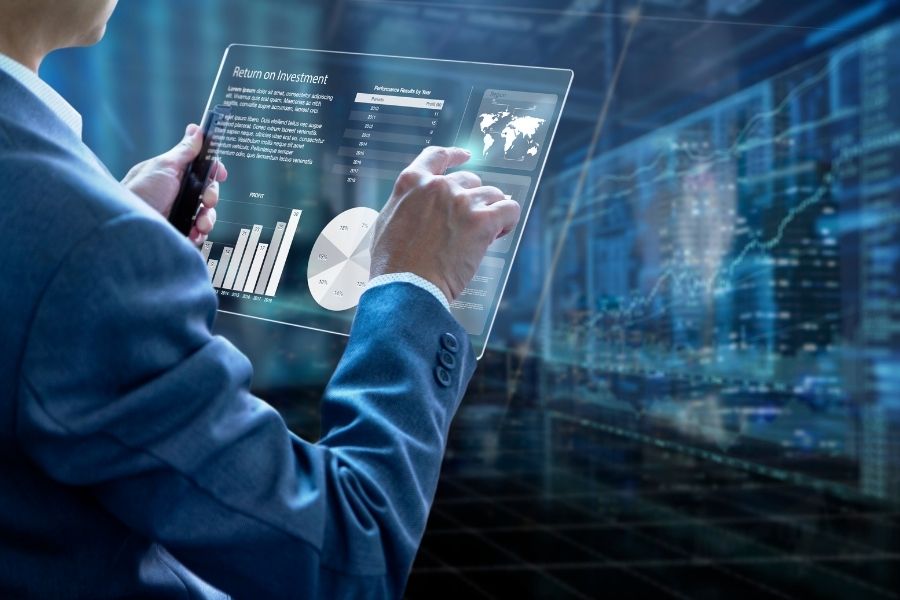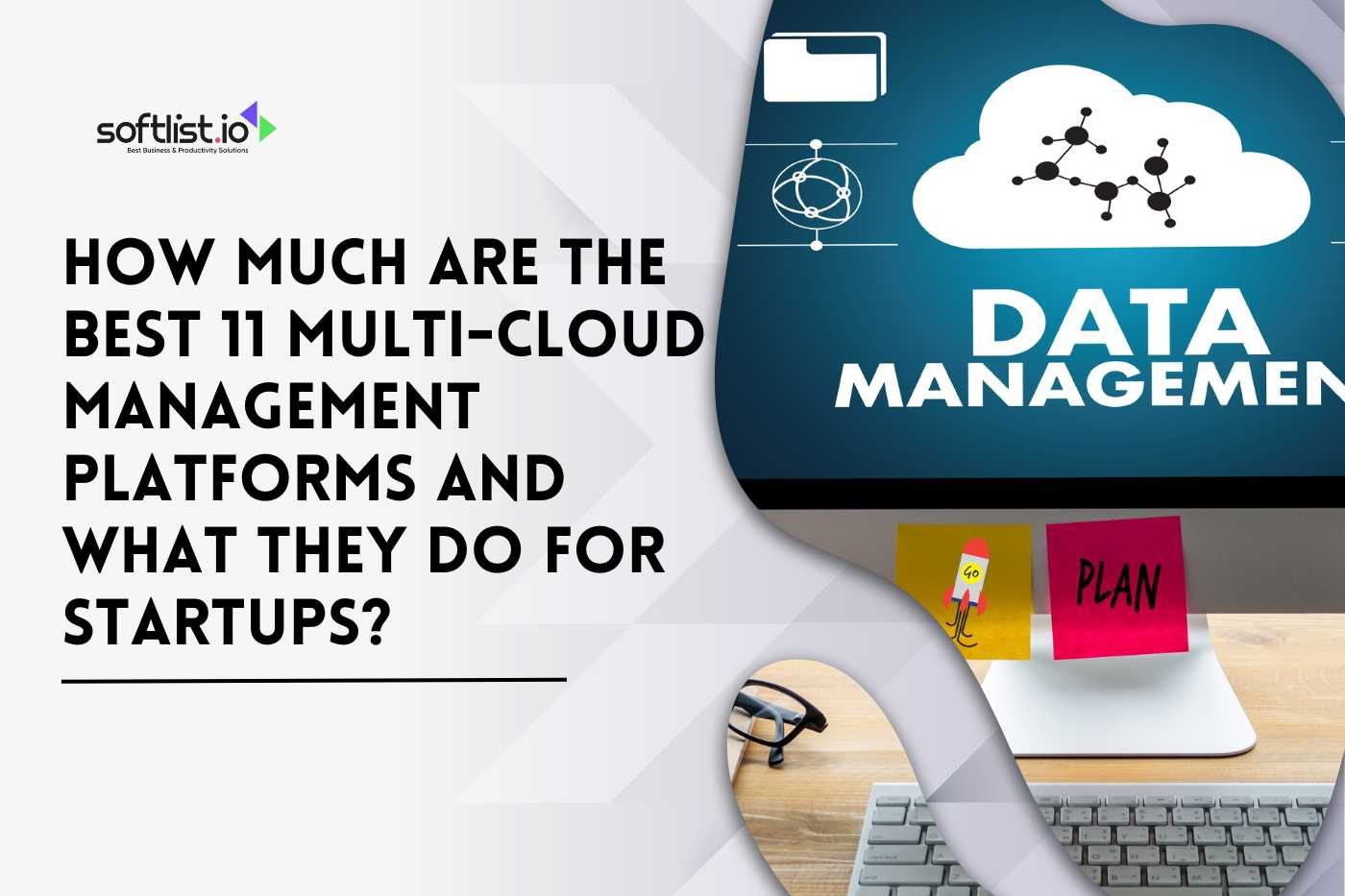People call data the “new oil” of the digital age because it affects every choice and action. It can be hard to understand and use more raw info.
Data visualization tools turn complicated numbers into pictures that tell a story. These tools make looking at data easier and finding patterns, trends, and ideas that text and spreadsheets miss. Whether you are a business expert, a researcher, or a student, you should know about data display tools.
This article thoroughly explains these tools to ensure you have everything you need to use your data effectively. As an art and science, let’s take the mystery out of data display.
Why Data Visualization Tools Matters?

Source: Canva Premium
In the age of big data, data analysis has become crucial for both individuals and corporations. Utilizing visualization software allows these entities to convert complex statistics into clear graphics, employing a visualization technique that makes data both easily digestible and interpretable. This method facilitates the identification of patterns, trends, and outliers, thereby guiding subsequent actions.
Graphics created from data provide a visual memory that is often more impactful than mere numbers. Consequently, arguments grounded in these visualized data points tend to be more persuasive, fostering collaboration among individuals.
With the constant evolution of technology, data visualization tools are continually adapting to cater to the growing demands of data interpretation. It’s essential for us to be adept at using these tools, transforming messy data into invaluable insights that can propel projects and initiatives forward.
Types of Data Visualizations
Source: Canva Premium
In the realm of data visualization, there are numerous methods to provide a visual representation of the best data, shedding light on different data patterns that can be both insightful and captivating. Some notable illustrations of these techniques are:
- Bar and column charts serve as ideal tools to juxtapose data sets or demonstrate variances.
- Line charts excel in depicting growth and evolution.
- Pie and donut charts elucidate how various segments constitute a whole.
- Heat maps, especially those grid-based, illuminate the density or concentration of data, aiding in understanding data distributions.
- Scatter plots elucidate the correlation between two distinct variables.
- Histograms offer insight into data voids, facilitating comprehension of data dispersion.
- Geographical maps pinpoint locations while conveying pertinent data about specific regions.
- Treemaps and sunburst charts visually represent hierarchical data layers.
When one opts for good data visualization techniques, raw data transforms into actionable insights, enhancing comprehension and guiding data-driven decision-making.
Popular Data Visualization Tools
Data visualization is pivotal in today’s data-centric world, offering a lens through which complex information becomes accessible and insightful. As the demand for these data visualization tools soars, several products have cemented their reputation as industry leaders. Let’s explore these front-runners:
Tableau
Renowned for its user-friendly design, Tableau has become a cornerstone in data visualization tools. Its robust platform empowers users to create dynamic dashboards that breathe life into data. From businesses to academia, it is widely embraced for its versatility.
Key Features
- Real-time analytics
- Robust data integration
- Interactive dashboards
Google Charts
Google Charts excels as a web-based tool, integrating with other Google services effortlessly. Its adaptability makes it a preferred choice for those needing custom visualizations without the heavy lifting of complex software.
Key Features
- Google services integration
- Dynamic data linking
- Customizable chart options
Zoho Reports
A stalwart in the business applications space, Zoho Reports offers a seamless experience for crafting insightful reports. Its online platform bridges the gap between intricate data sets and understandable visuals.
Key Features
- Automated data sync
- An array of visualization tools
- Scalable architecture
Jupyter
A darling among data scientists, Jupyter’s open-source platform is tailor-made for interactive computing tasks. Its environment is conducive to both data manipulation and rich visualization outputs.
Key Features
- Live code execution
- LaTeX equations support
- Interactive outputs
Dundas BI
A holistic solution for businesses, Dundas BI’s platform is both intuitive and robust. It melds the intricacies of business intelligence with user-friendly visualization features, catering to a broad audience.
Key Features
- Self-service reporting
- Drag-and-drop design
- Real-time analytics
Mobile Data Visualization: Tools and Trends
Source: Canva Premium
In today’s digital era, mobile data visualization techniques have emerged as some of the most pivotal tools at our disposal. These techniques enable individuals to peruse vast datasets conveniently while on the move. As the ubiquity of mobile devices surges, there’s a growing demand for rapid and reliable mobile visualization methods. Power BI Mobile stands out as a paradigm of great data visualization. Its cloud-centric architecture ensures that users have round-the-clock access to dashboards and data. Key features of Power BI Mobile include:
- Interactive dashboards that users can tap and zoom into, providing immediate insights.
- Instant notifications when data undergoes changes or manifests anomalies.
- Facilitation of collaboration: The app empowers users to share and collectively brainstorm data-driven concepts.
- Safety protocols: These confer enterprise-grade security to safeguard information.
With the advent of data visualization tools come innovative trends, including AR integrations, AI-driven insights, and personalized experiences. Leveraging these advancements, the future of mobile data visualization promises to be adaptable and user-centric, ensuring that even intricate information remains accessible and comprehensible. Using data visualization tools like the pie chart, for instance, can simplify complex data sets into easily digestible segments.
Choosing the Right Tool for Your Needs
Source: Canva Premium
In today’s data-driven world, picking the right data display tool can make all the difference. As businesses and people deal with bigger and bigger datasets, it’s more important than ever to have good data visualization tools. Follow these steps to get through this choosing process:
- Decide What You Want: You should know whether you want real-time data, reports, interactive dashboards, or a mix.
- Think about the data sources: Make sure that the tool works well with your data stores, whether they are databases, cloud services, or files.
- Check to see if the platform you choose can grow with your data. It should be OK with performance and usefulness as your data grows.
- Put ease of use first. The tool should work for you no matter how experienced you are as a data scientist.
- Limits on the budget: Consider the up-front costs and any possible extra costs, like training or extras.
- Look over the collaborative features: Sharing and changing files can be very helpful in team settings.
- Steps taken for safety: Make sure the platform follows strict security rules. This is especially important for sensitive info.
Future Trends in Data Visualization

Source: Canva Premium
In data science, which is constantly changing, it’s essential to know how to visualize data in new ways. The goal of data visualization is to turn complicated data into pictures that are easy to understand and help people make decisions. Things to keep an eye on in 2010:
- No more static maps with dynamic screens. These days, tools for data visualization let people see data in real time, change how it looks, and get more information.
- Augmented and virtual reality (AR/VR): Immersive watching will change the way we use data in a big way. Users can see data on screens and step into and feel it.
- Putting AI and data representation together makes graphs and charts that look better. AI will find trends, outliers, and estimates, making it easier to make choices.
- Data storytelling: Using mathematical insights to tell interesting data stories will become more common.
Data visualization tools will let users make more specific changes to their needs. Members can change how the info is shown to fit how they think.
Best Practices for Effective Data Visualization

Source: Canva Premium
In the modern age, there is a lot of data. How information is presented affects how well it is understood, and decisions are made. Not only must images look good, they must also be clear and get your point across. Take a look at these best methods for representing data to get better:
- Could you keep it simple? Designs with many small details may look nice but can make the message more challenging. To make things more transparent, pick easy schemes and get rid of features that aren’t needed.
- Figure out which type of chart to use. Bar charts and pie graphs are only sometimes the best way to show facts. Pick the best scatter plot, histogram, or line graph that shows your data.
- Use of the Same Colors: Using the same colors throughout makes it easy to read and looks better. Use only a few colors that need to be clarified. Each color should have a purpose.
- Pay attention to data integrity: check your info. Even unintentional lies can hurt your reputation and lead you to make bad choices.
- Add Interactive Elements: Dashboards and charts that can be interacted with help users explore. They can change their minds and get new information.
Final Thoughts
Many people work with a lot of data, and a good tool for showing that data can help them. This brief talked about a few of the many tools out there. There are good things about each that make it useful in different scenarios.
Anyone can find a tool that works for them, from beginners who want something simple to use to pros who wish for something with many features. We need to be able to see our info now that we live in the digital age. Remember that only knowledge that makes sense can be helpful.
Read more about how AI can help you with essential tasks on our page about different visual collaboration platforms. You have yet to use data intelligence.
Visit our blog to learn more about Data Visualization Tools.
Frequently Asked Questions About Data Visualization Tools
How is data visualization often defined?
Data visualization is the process of translating massive amounts of data into a visual context, such as graphs, charts, or maps. This enables users to understand complex data sets easily and draw insights from the information presented.
What role does data visualization play in today’s data-driven world?
Data visualization plays an important role in our data-centric world. It helps to simplify large data sets, making it easier for individuals and organizations to interpret vast amounts of data and make informed decisions.
What are some popular data visualization software available?
There are many data visualization software options available. For example, Tableau Public is a free-to-use tool that’s popular among many users. Such data visualization tools provide powerful visualization features and allow for interactive visualization of data.
Why is the process of data visualization important?
The importance of data visualization lies in its ability to make data comprehensible. As we deal with massive amounts of data daily, data visualization makes it possible to see patterns, trends, and outliers that might go unnoticed in raw, textual data.
Are there different types of visualization?
Yes, the field of data visualization encompasses various types, including information visualization, scientific visualization, and visualization and statistical graphics. The type of visualization chosen often depends on the specific data being examined and the insights one hopes to gain.
How can I choose the best representation of data?
The best representation of data depends on the kind of data collected and the insights you wish to draw. For instance, maps are used to show geographical data, while charts are used for trends. Understanding data visualization requires knowledge of these various visualization styles.
Does data visualization only work with large data sets?
While data visualization shows its power in dealing with large data sets, it’s also beneficial for smaller sets of data. The key is using visual elements effectively to present data in a comprehensible manner.
How is data visualization different from data presentation?
Data presentation is a broader concept that includes any way data or information is presented, whether textually or visually. Data visualization provides a more focused approach, emphasizing the use of graphics and interactive elements.
Can you provide some examples of data visualization?
Certainly! Examples of data visualization range from simple bar graphs and pie charts to complex heat maps and treemaps. In fact, maps are used for geographical data, charts are used to represent specific data values, and many other visualization styles exist for presenting data in different contexts.
Is the use of data visualization limited to any specific field?
No, data visualization is used in a variety of domains, from business and finance to science and healthcare. The power of data visualization lies in its universal applicability, where it can transform data into a visual story, irrespective of the field.
Do I need any special skills to create data visualizations?
While anyone can create basic visualizations, mastering data visualization requires an understanding of both the data and the tools used. Many data visualization software options, like Tableau Public, are user-friendly, but for more powerful visualization techniques, some training might be beneficial.






